Three identical horizontal rods AB, CD and EF each of length 2m are on a smooth horizontal surface. Rod CD is at rest while the rods AB and EF are purely translating with equal and opposite velocities of magnitude 5 m/s.The ends B and E collide simultaneously with the ends C and D respectively, and the rods rigidly join just after the collisions.Find the angular speed of the system in rad/s just after the collision.
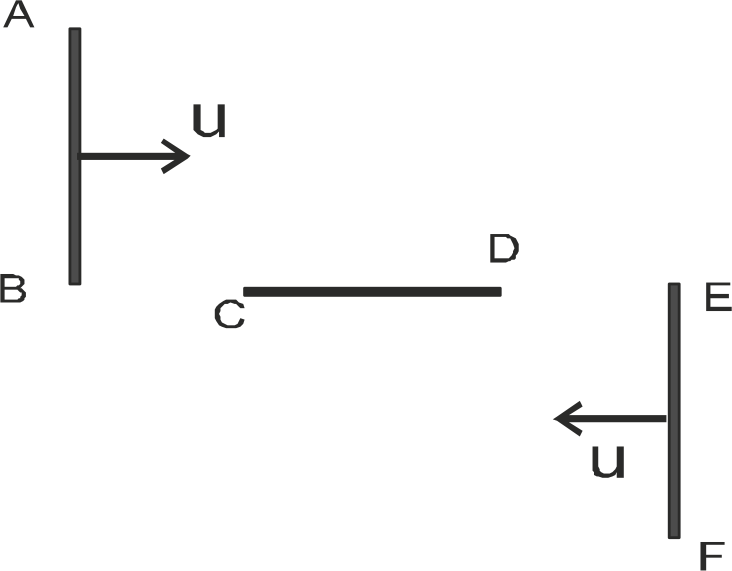
Applying conservation of the angular momentum of the system of three rods about midpoint of the rod CD
=m×5×1+m×5×1=[2(m2212+m(√2)2)+m2212]⇒ω=3015=2rad/sec
Topper's Solved these Questions
Similar Questions
A radioactive element decays by β−emission. A detector records n beta particles in 2s and in next 2s it records 0.75n beta particles. Find mean life correct to nearest whole number. Given ln |2|=0.6931, ln |3|=1.0986.
05:56View SolutionWhen p−n junction diode is forward biased, then
05:53View SolutionA rod CD of thermal resistance 5.0KW−1isjo∈edatthem≤ofannticalrodABasshown∈figure.TheendsA,BandDarema∫a∈edat100^(@)C,0(@)C and 25(@)C respectively. Find the heat current in CD.
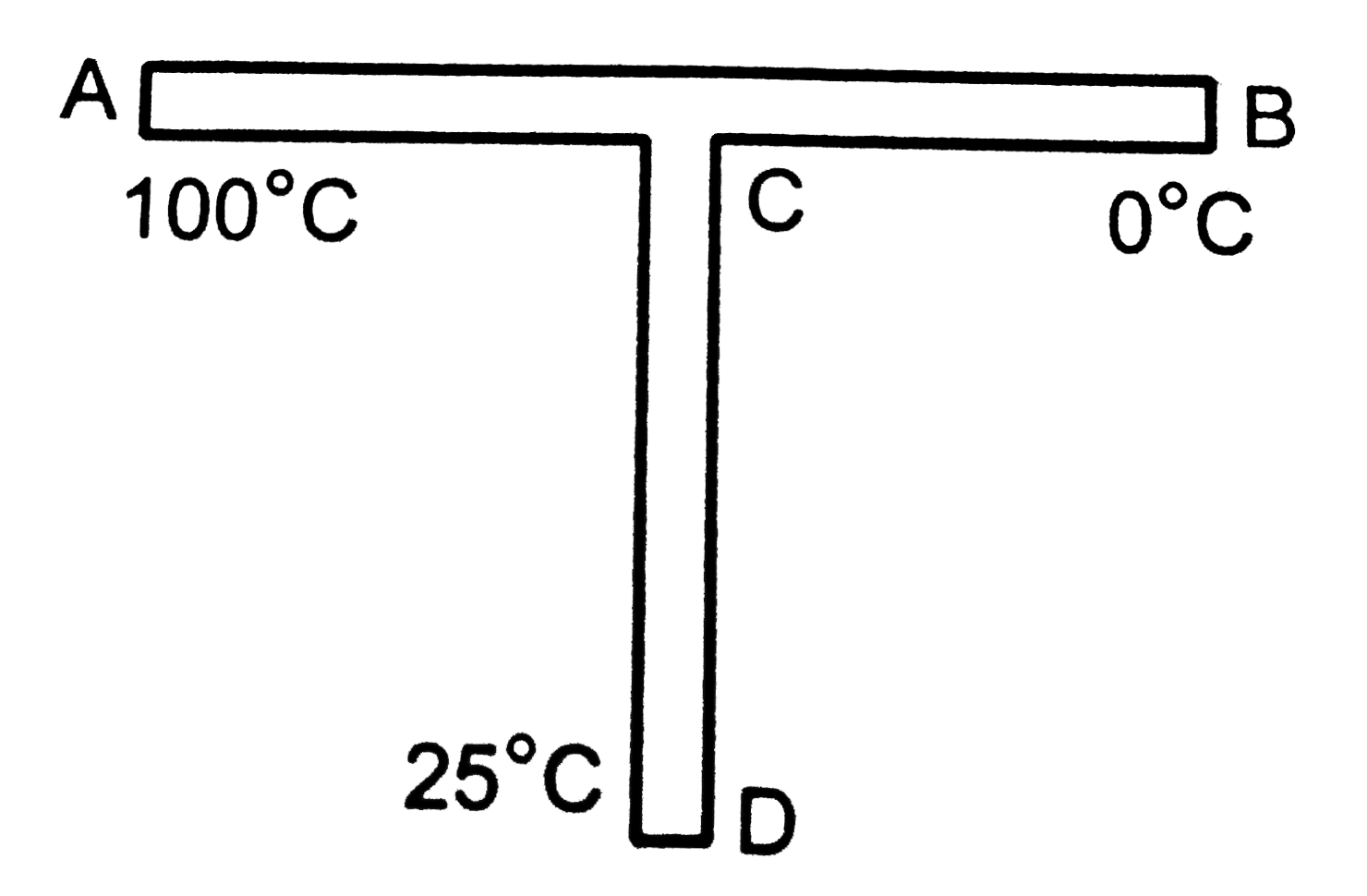 04:07View Solution
04:07View SolutionA uniform rod of length l and mass 2 m rests on a smooth horizontal table. A point mass m moving horizontally at right angles to the rod with velocity v collides with one end of the rod and sticks it. Then
12:53View SolutionThree identical horizontal rods AB, CD and EF each of length 2m are on a smooth horizontal surface. Rod CD is at rest while the rods AB and EF are purely translating with equal and opposite velocities of magnitude 5 m/s.The ends B and E collide simultaneously with the ends C and D respectively, and the rods rigidly join just after the collisions.Find the angular speed of the system in rad/s just after the collision.
 03:32View Solution
03:32View SolutionA uniform rod of length l and mass 2m rests on a smooth horizontal table. A point of mass m moving horizontally at right angle to the rod with velocity v collides with one end of the rod and sticks to it, then:
05:32View SolutionA uniform rod AB of mass m and length l is at rest on a smooth horizontal surface. An impulse J is applied to the end B perpendicular to the rod in horizontal direction. Speed of the point A of the rod after giving impulse is:
View SolutionA rod AB of length L and mass M is free to move on a frictionless horizontal surface . It is moving with a velocity v , as shown in figure. End B of rod AB strikes the end of the wall. Assuming elastic impact , the angular velocity of the rod AB , just after
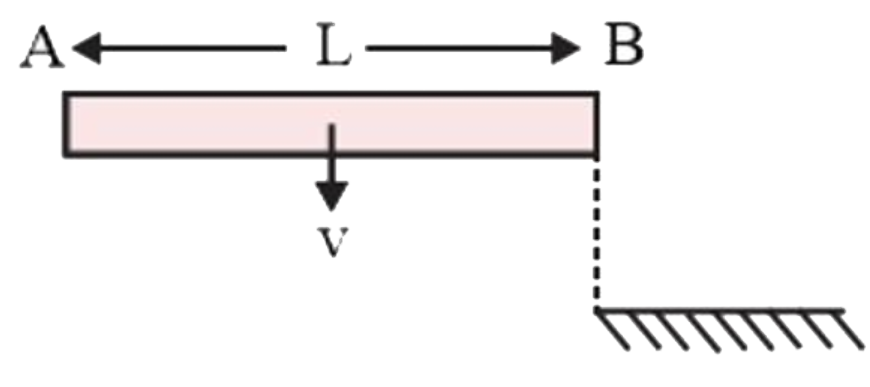 09:07View Solution
09:07View SolutionA rod AB of length L and mass M is free to move on a frictionless horizontal surface. It is moving with a velocity v, as shown in figure. End B of rod AB strikes the end of the wall. Assuming elastic impact, the angular velocity of the rod AB, just after impact, is
07:56View SolutionA uniform rod of mass m and length L is at rest on a smooth horizontal surface. A ball of mass m, moving with velocity v0, hits the rod perpendicularly at its one end and sticks to it. The angular velocity of rod after collision is
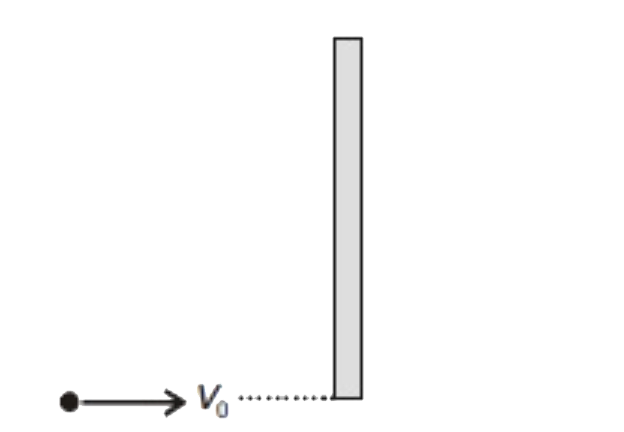 05:28View Solution
05:28View Solution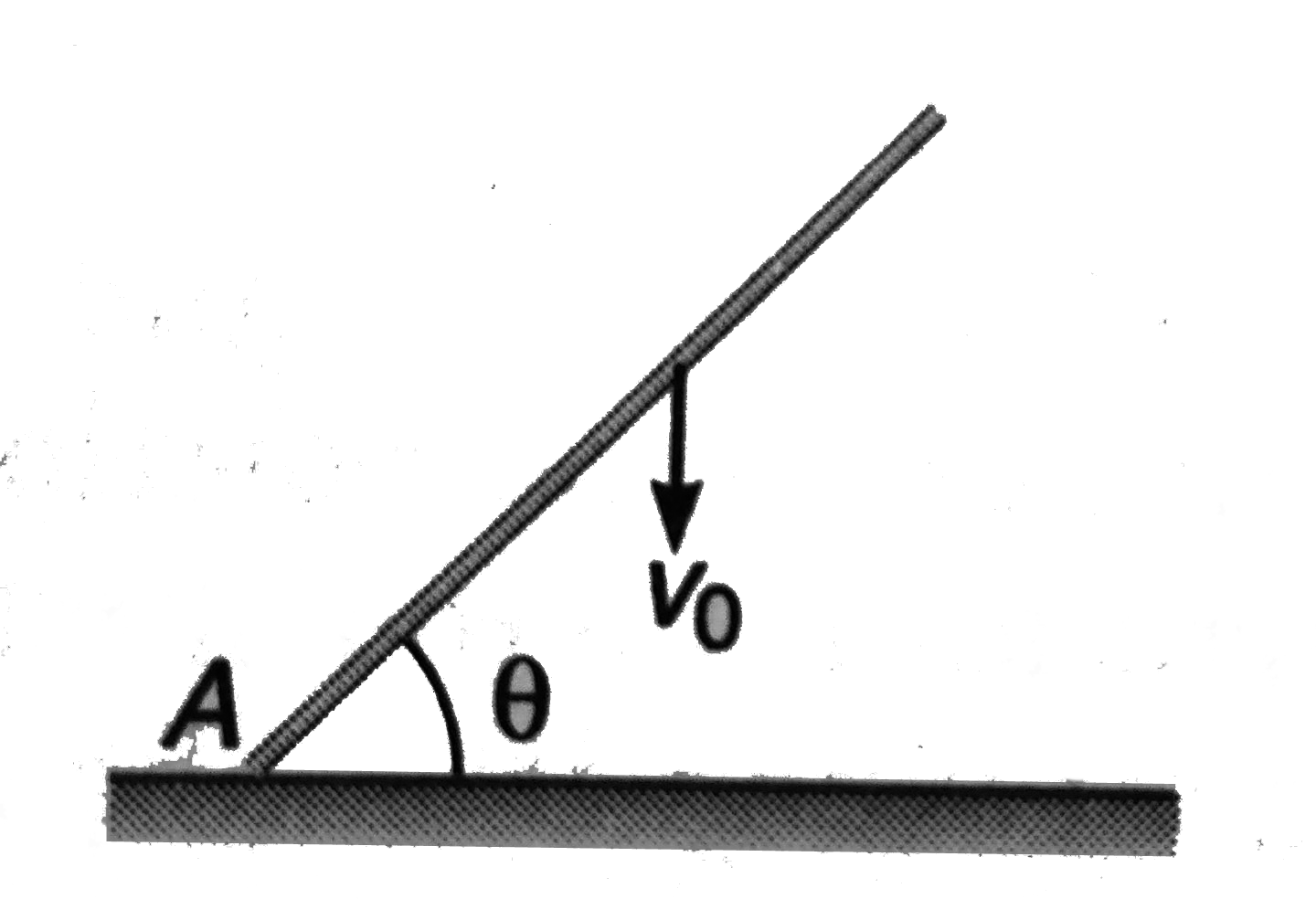
A rod of length l forming an angle θ with the horizontal strikes a frictionless floor at A with its centre of mass velocity v0 and no angular velocity. Assuming that the impact at A is perfectly elastic. Find the angular velocity of the rod immediately after the impact.View SolutionA rod CD of thermal resistance 5.0KW−1 is joined at the middle of an identical rod AB as shown in figure. The ends A, B and D are maintained at 100∘C , 0∘C and 25∘C respectively. Find the heat current in CD.
 06:53View Solution
06:53View SolutionOne end of a uniform rod of mass m and length / is clamped. The rod lies on a smooth horizontal surface and rotates on it about the clamped end at a uniform angular velocity ω. The force exerted by the clamp on the rod has a horizontal component.
05:56View SolutionA uniform rod of length l and mass 2 m rests on a smooth horizontal table. A point mass m moving horizontally at right angles to the rod with velocity v collides with one end of the rod and sticks it. Then
04:20View SolutionA rod CD of thermal resistance 5.0KW−1 is joined at the middle of an identical rod AB as shown in figure. The ends A,B and D are maintained at 100∘C , 0∘C and 25∘C respectively. Find the heat current in CD.
 View Solution
View Solution

